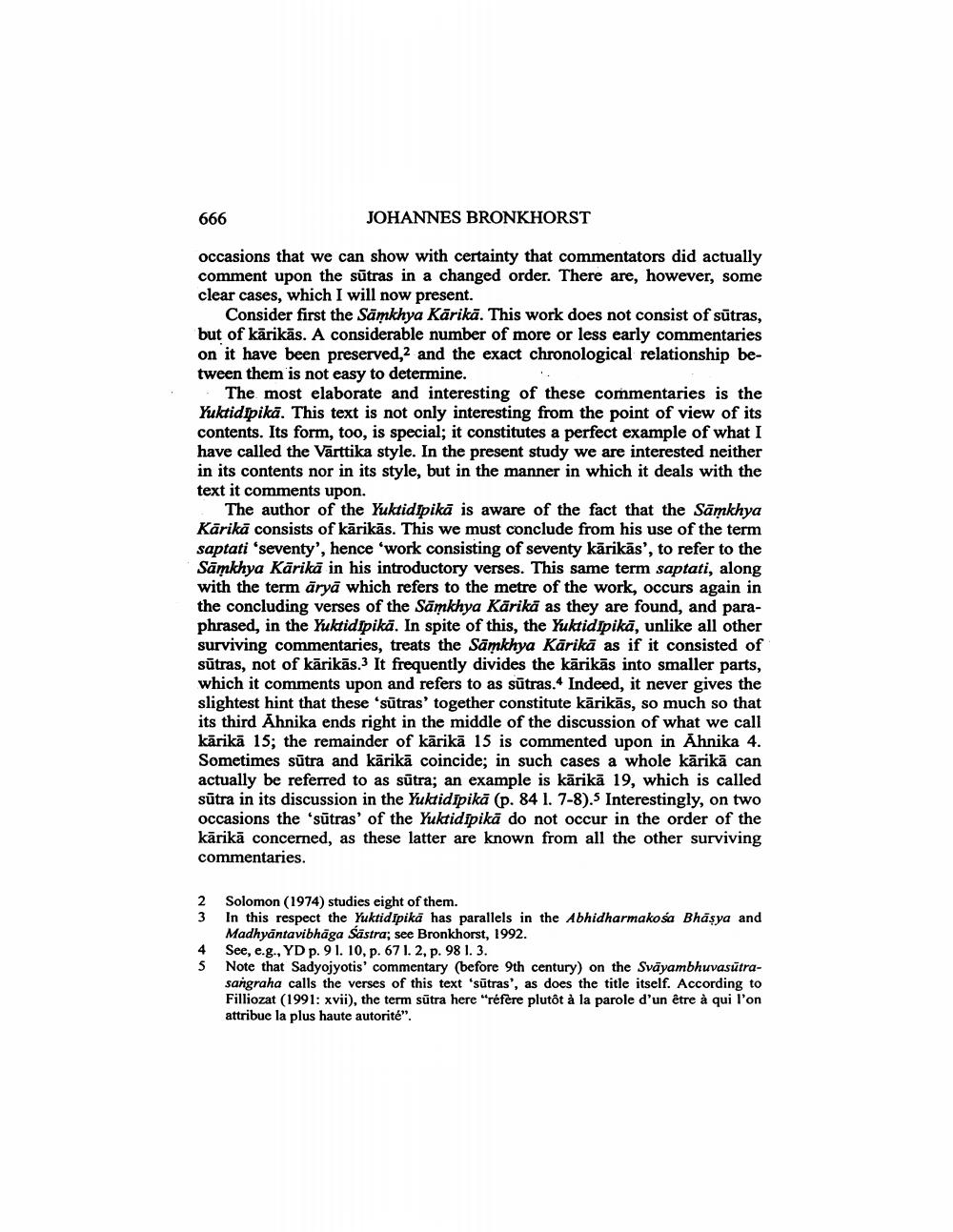Book Title: Once Again Vaisesika Sutra 3 1 13 Author(s): Johannes Bronkhorst Publisher: Johannes Bronkhorst View full book textPage 2
________________ 666 JOHANNES BRONKHORST occasions that we can show with certainty that commentators did actually comment upon the sūtras in a changed order. There are, however, some clear cases, which I will now present. Consider first the Samkhya Kärikā. This work does not consist of sūtras, but of kārikās. A considerable number of more or less early commentaries on it have been preserved, and the exact chronological relationship between them is not easy to determine. The most elaborate and interesting of these commentaries is the Yuktidipikā. This text is not only interesting from the point of view of its contents. Its form, too, is special; it constitutes a perfect example of what I have called the Vārttika style. In the present study we are interested neither in its contents nor in its style, but in the manner in which it deals with the text it comments upon. The author of the Yuktidipikā is aware of the fact that the Sāmkhya Karikā consists of kārikās. This we must conclude from his use of the term saptati 'seventy', hence 'work consisting of seventy kārikās', to refer to the Sāmkhya Kārikā in his introductory verses. This same term saptati, along with the term āryā which refers to the metre of the work, occurs again in the concluding verses of the Sāmkhya Kārikā as they are found, and paraphrased, in the Yuktidipikā. In spite of this, the Yuktidipikā, unlike all other surviving commentaries, treats the Samkhya Kārikā as if it consisted of sūtras, not of kārikās.3 It frequently divides the kārikās into smaller parts, which it comments upon and refers to as sūtras. Indeed, it never gives the slightest hint that these 'sūtras' together constitute kārikās, so much so that its third Ahnika ends right in the middle of the discussion of what we call kārikā 15; the remainder of karikā 15 is commented upon in Ahnika 4. Sometimes sūtra and kārikā coincide; in such cases a whole kārikā can actually be referred to as sūtra; an example is kārikā 19, which is called sūtra in its discussion in the Yuktidipikā (p. 84 1. 7-8).5 Interestingly, on two occasions the 'sūtras' of the Yuktidipikā do not occur in the order of the kārikā concerned, as these latter are known from all the other surviving commentaries. 2 Solomon (1974) studies eight of them. In this respect the Yuktidipikā has parallels in the Abhidharmakośa Bhasya and Madhyāntavibhāga Šāstra; see Bronkhorst, 1992. See, e.g., YD p. 91. 10, p. 671. 2, p. 98 1. 3. Note that Sadyojyotis' commentary (before 9th century) on the Svayambhuvasūtrasangraha calls the verses of this text 'sūtras', as does the title itself. According to Filliozat (1991: xvii), the term sūtra here "réfère plutôt à la parole d'un être à qui l'on attribue la plus haute autorité".Page Navigation
1 2 3 4 5 6 7 8 9 10 11 12 13 14 15 16 17
